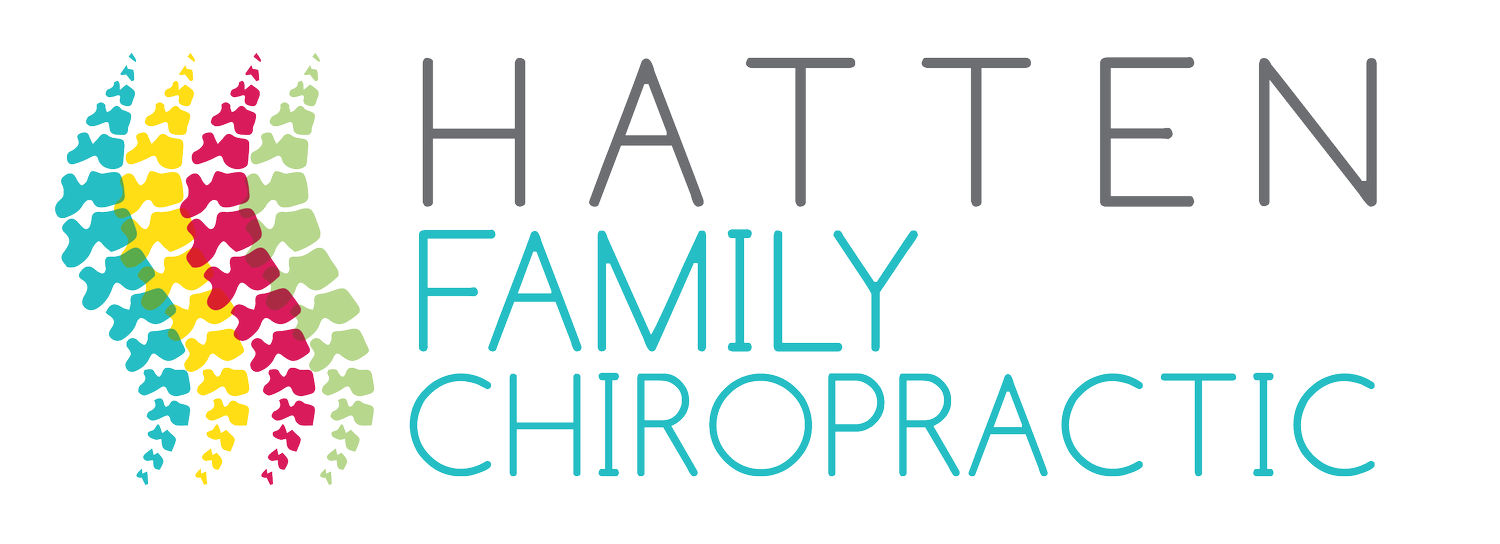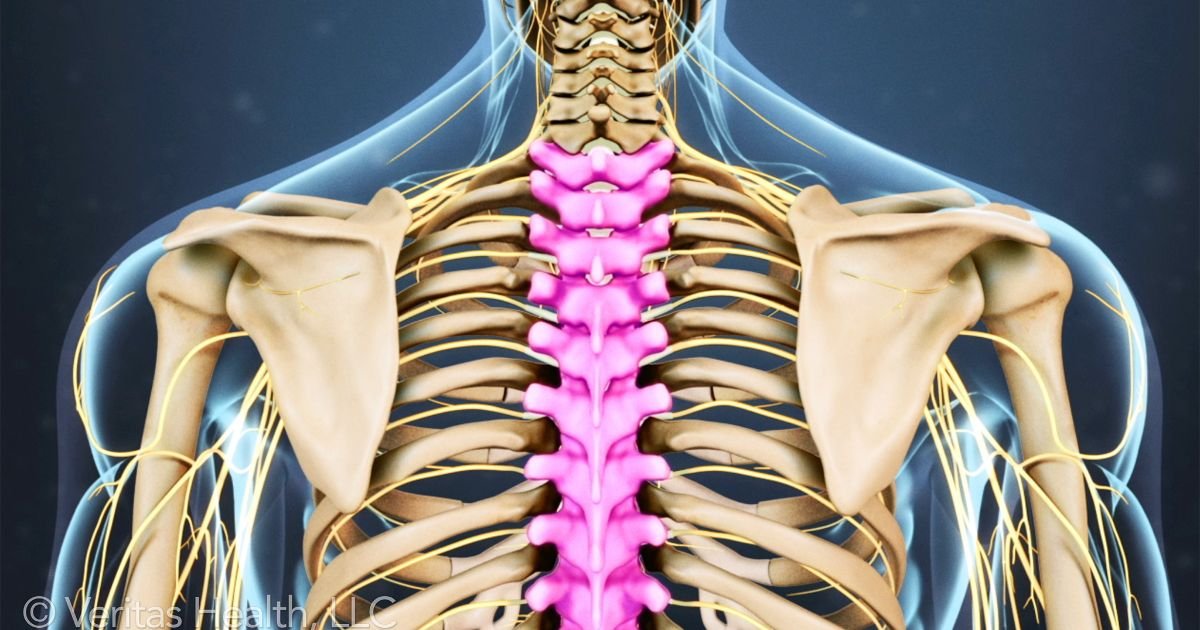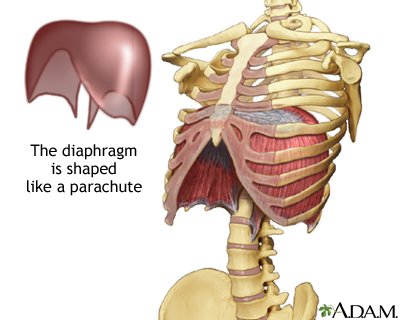Let's learn more about the thoracic spine!
I love that you can see the nerves, (little yellow noodle-y things)! These are just the largest nerves, there are many more in this area that aren't pictured. This image is presented here courtesy of https://www.spine-health.com.
Where is the thoracic spine?
The thoracic spine is the name for the upper and middle back that extends from the base of the neck to the top of the lower back. Typically, the thoracic spine extends from the top of the shoulders to the bottom of the rib cage.
What is the thoracic spine good for?
Unlike the neck and low back that have lordotic curves, (or curves bending forward), the thoracic spine has a kyphotic curve that bends backwards. Where the cervical and lumbar spines are built for flexibility and strength, the thoracic spine is built primarily for stability.
The thoracic spine serves as the foundation for the rib cage and the diaphragm. So, not only does the thoracic spine play a role in protecting our most important internal organs, it also helps us keep breathing!
Fun Facts about the Thoracic Spine!
The thoracic spine has the most articulations, or joints, of any part of the spine because of the thoracic support of the rib cage! Each segment of the thoracic spine has four distinct joints with as many as 12 articulating elements. Most joints consist of only two articulating bones, just to give you a little perspective.
The intervertebral discs between the thoracic vertebra are thinner than anywhere else in the spine. If the midback is seriously injured, the spinal cord can be at risk because of this. However, because the thoracic spine is built for stability and not strength, it is much less frequently injured.
The diaphragm, a parachute-shaped muscle, connects to the lower six ribs as well as the thoracic spine. This is the muscle that allows us to breathe, speak, and sing. It also separate the vital organs inside the rib cage from the rest of the internal organs in the abdomen.
Yours in health,
Dr. William




